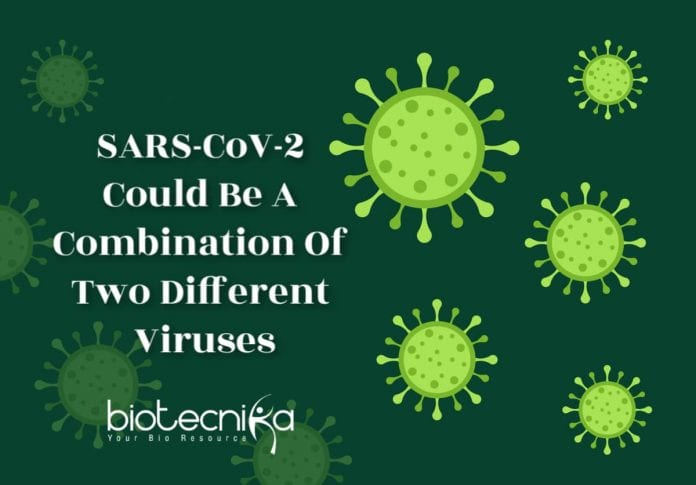Coronavirus Is A Chimera Between Two Different Viruses
While a number of research papers are being published each day on the novel coronavirus, there have been a lot of rumors too. And there is still a lot to understand about the virus.
Where did the virus originate from? Bat, pangolin, or any other wild animal? Where did it come from? When Covid-19 first appeared in December, 41 people hospitalized (66%) had passed through a market in the Wuhan city of Hubei. However, the very first human case identified had no links to the market.
As per the molecular dating study conducted, the virus originated in November. This raises questions on the connection between the pandemic and the wildlife.
The SARS-CoV-2 genome is 30000 bases long with 15 genes, including the S gene that codes for a viral surface protein.
Using the comparative genomic analyses, researchers showed that the novel coronavirus is very similar to the SARS-CoV virus that caused the SARS outbreak in 2002 and belongs to the group of Betacoronaviruses.
The novel coronavirus: Chimera between two viruses
Bats of Rhinolophus species were found to be the reservoir of the SARS virus, and a small carnivore called the palm civet could have
served as the intermediate host between bats and humans.Since then, Betacoronaviruses have been discovered in both humans and bats. For example, the RaTG13 virus identified in Rhinolophus affinis species of China’s Yunan Province was discovered to be 96% genetically identical to SARS-CoV-2.
These results indicate that bats, especially the Rhinolophus genus, are a reservoir of both SARS-CoV and SARS-CoV-2 viruses.
Researchers discovered that the SARS-CoV-2 virus is 99% related to a virus identified in pangolin. However, a recent study showed that coronavirus isolated from the Malaysian pangolin (Manis javanica) is genetically less related to SARS-Cov-2. This would suggest that the coronavirus isolated from pangolin is not causing the Covid-19 pandemic.
But a specific region of the S protein of the novel coronavirus is 99 percent similar to that of the coronavirus isolated from pangolin. This region of S protein corresponds to the 74 amino acids involved in the ACE2 receptor binding domain that allows the novel coronavirus to infect human cells.
But this specific region in RaTG13 virus from bat R. affinis is only 77% similar to the SARS-CoV-2 virus. This explains why the coronavirus isolated from pangolin is capable of infecting human cells while the RaTG13 is not.
The study suggests that the SARS-CoV-2 virus is the result of recombination between two viruses, one close to that isolated from pangolin and the one close to RaTG13. It means the novel coronavirus SARS-CoV-2 is a chimera between two previously existed viruses.
The recombination might have occurred when the two viruses infected the same organism. But in which organism and under what conditions the recombination occurred, still remains unanswered.






























